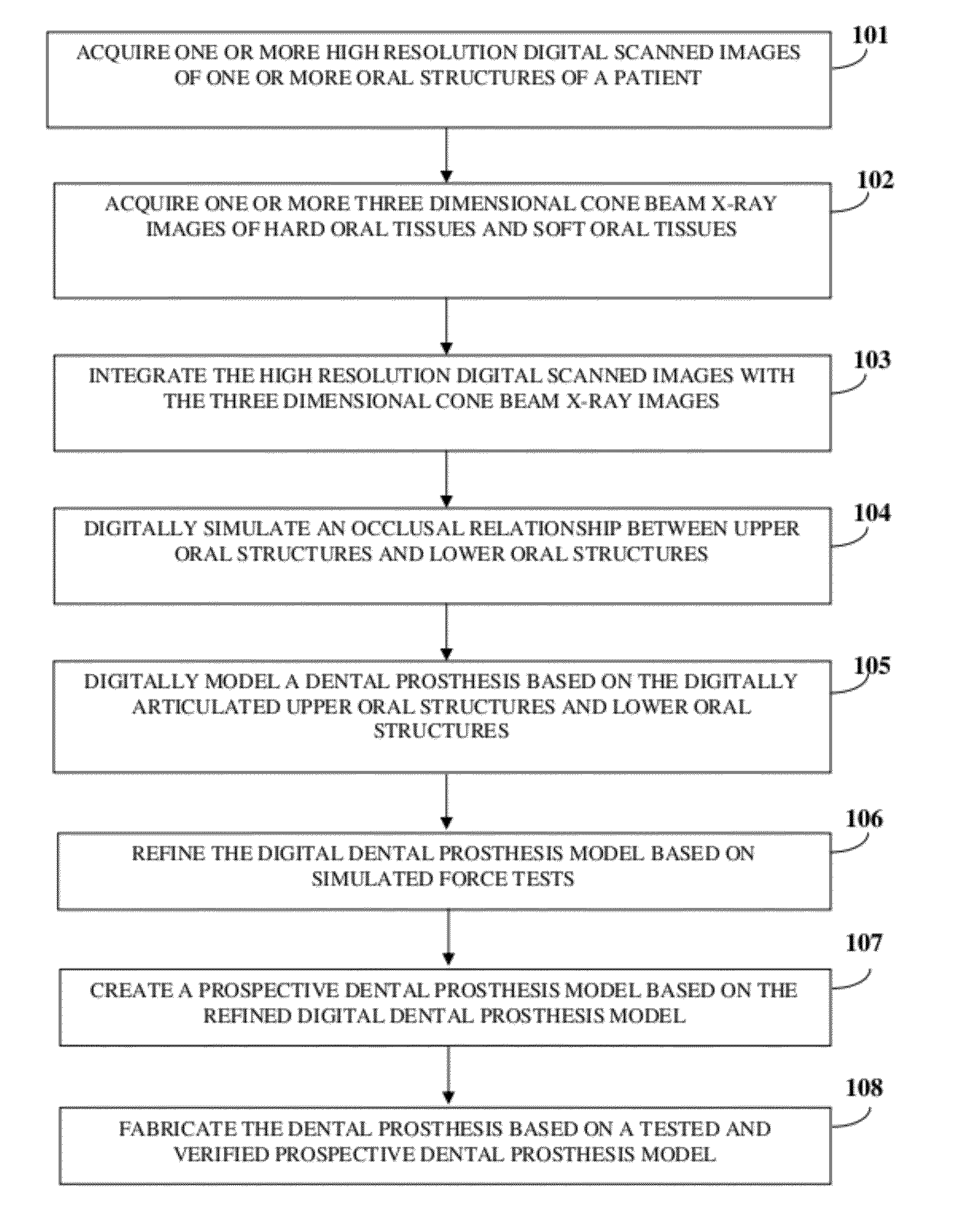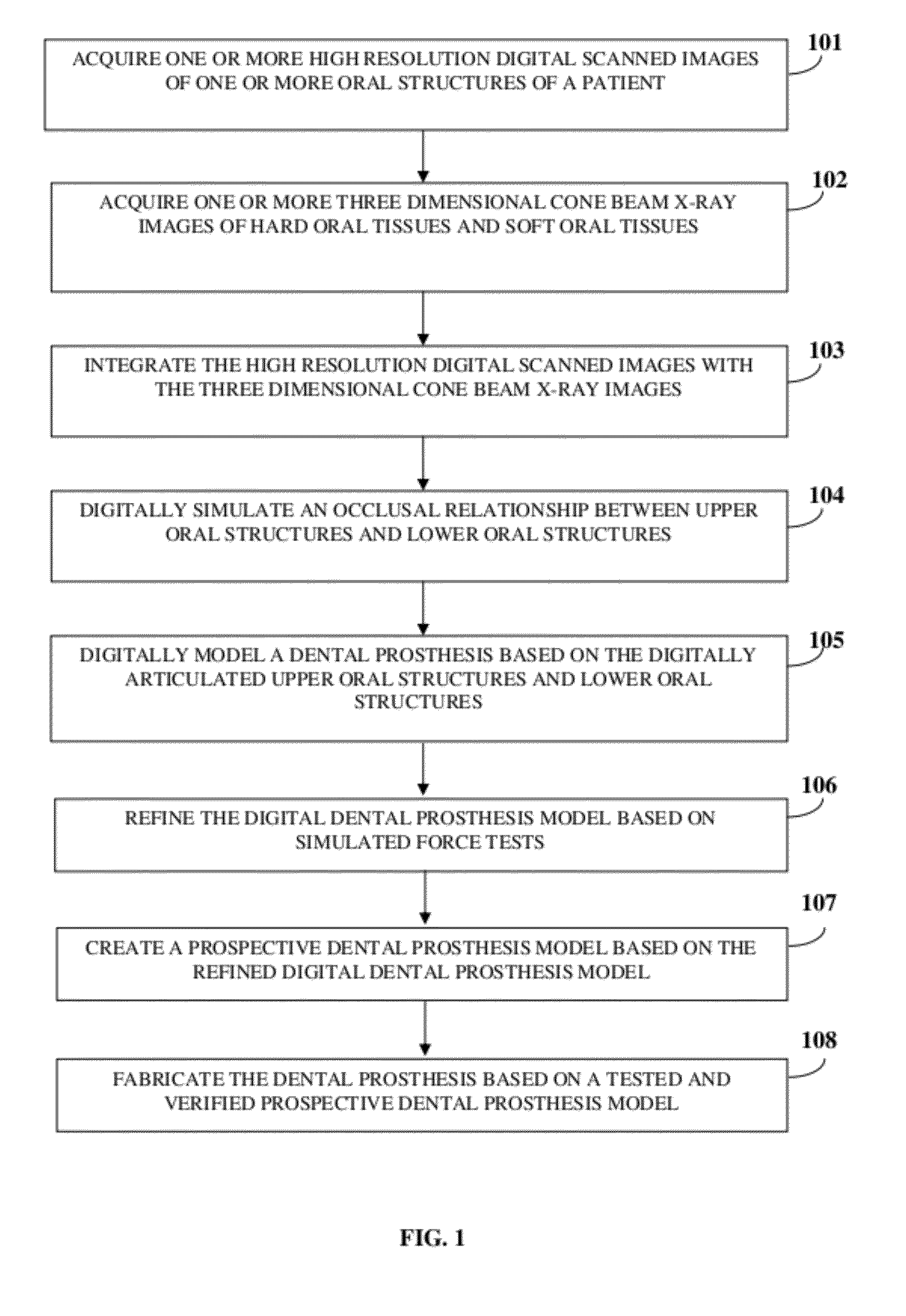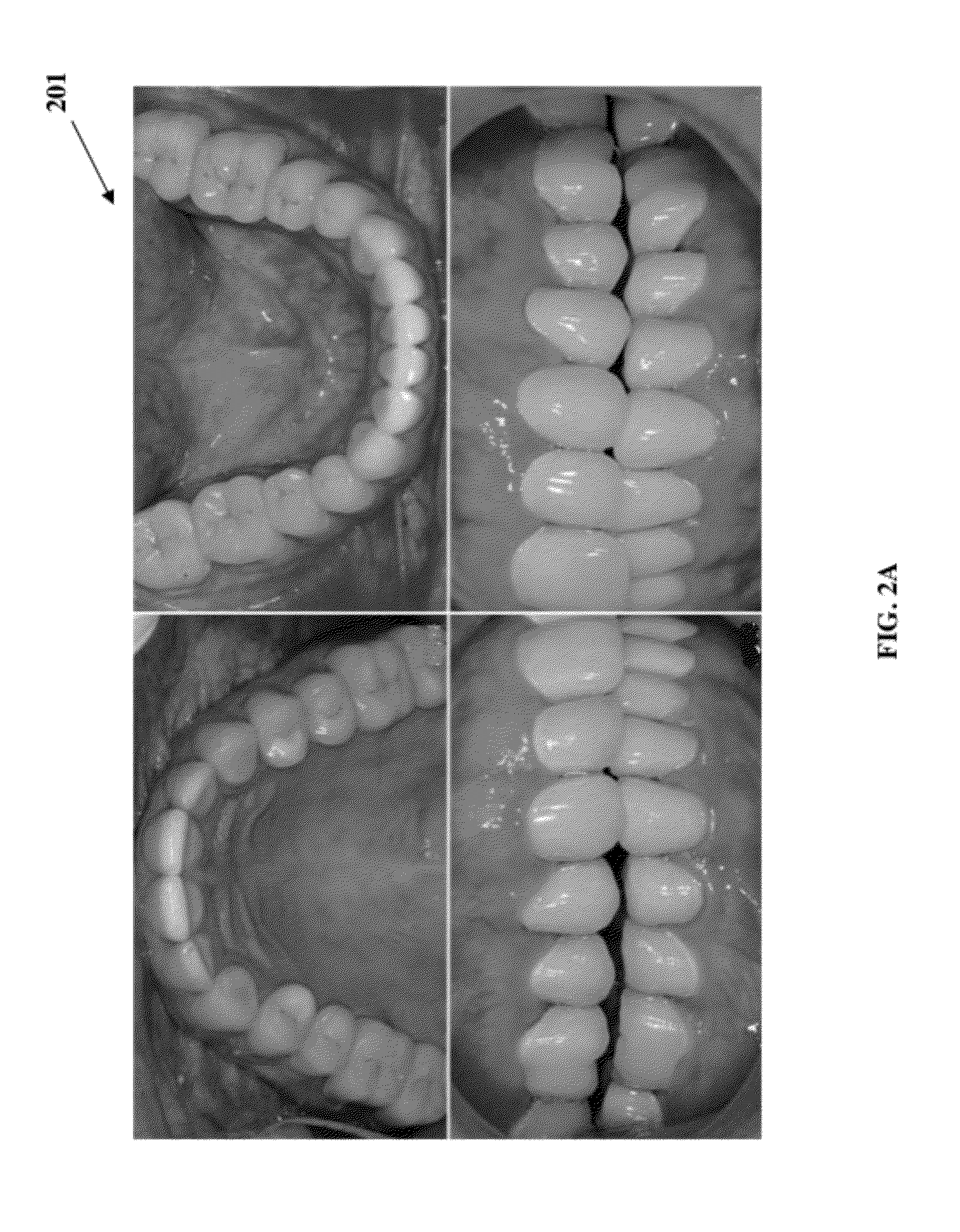Computer-aided Fabrication Of A Removable Dental Prosthesis
a technology of dental prosthesis and computer assisted fabrication, which is applied in the field of computer-aided fabrication of removable dental prosthesis, can solve the problems of complex structure, complex structure, and inability to guarantee patient satisfaction,
- Summary
- Abstract
- Description
- Claims
- Application Information
AI Technical Summary
Benefits of technology
Problems solved by technology
Method used
Image
Examples
Embodiment Construction
[0034]FIG. 1 illustrates a method for fabricating a dental prosthesis for a patient. One or more three dimensional high resolution digital scanned images 201 of one or more oral structures of the patient, as exemplarily illustrated in FIG. 2A, are acquired 101 using one or more digital image scanning devices. The oral structures are, for example, the maxillary and mandibular bone and dentition of the patient. One or more three dimensional cone beam X-ray images 202 of hard oral tissues and soft oral tissues of the patient, as exemplarily illustrated in FIG. 2B, are acquired 102 using a cone beam X-ray image device. The high resolution digital scanned images 201 of the oral structures are integrated 103 with the three dimensional cone beam X-ray images 202 of the hard oral tissues and the soft oral tissues of the patient in a three dimensional space to obtain one or more combined three dimensional images of the oral structures of the patient. FIG. 2C exemplarily illustrates combined ...
PUM
 Login to View More
Login to View More Abstract
Description
Claims
Application Information
 Login to View More
Login to View More - R&D
- Intellectual Property
- Life Sciences
- Materials
- Tech Scout
- Unparalleled Data Quality
- Higher Quality Content
- 60% Fewer Hallucinations
Browse by: Latest US Patents, China's latest patents, Technical Efficacy Thesaurus, Application Domain, Technology Topic, Popular Technical Reports.
© 2025 PatSnap. All rights reserved.Legal|Privacy policy|Modern Slavery Act Transparency Statement|Sitemap|About US| Contact US: help@patsnap.com



